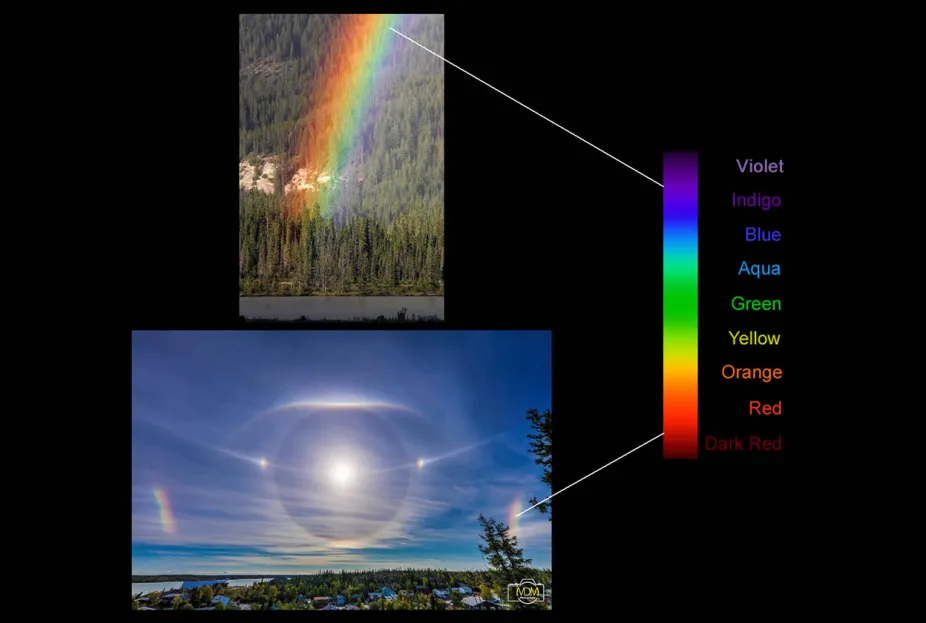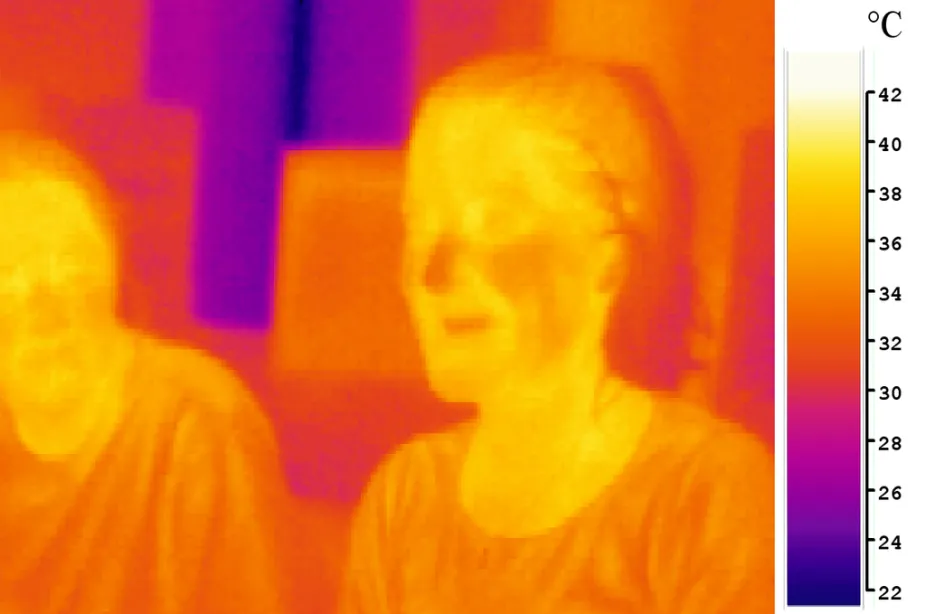Types of Energy from the Sun
There are two main types of energy that come from the Sun. These include visible radiation, which we perceive as light, and invisible infrared energy, which we sometimes think of as heat. Both visible and infrared radiation are part of the electromagnetic spectrum, which includes all the types of energy released by the Sun.
The Light We See
Think of a picture of the Sun taken from space, and compare it with an image of the Sun from Earth. In both images, the Sun appears as white light, which is the result of all of the colors mixed together. The light we see from the Sun comes from the very hot temperatures of its surface, or photosphere. Although astronomers classify our Sun as a yellow dwarf star, its surface is visible to our eyes as white light, from the combination of all the colors in the visible part of the spectrum.

Whether from Earth or in space, light from our Sun appears white as our eyes see all the colors of the spectrum mixed together.
(left) NASA, (right) Creative Commons Kreuzschnabel
Sometimes, water droplets or ice crystals in the atmosphere create optical phenomena that help separate light into its spectrum of colors. A rainbow is a prime example of this phenomenon, caused by raindrops in the sky essentially acting as a prism to split light into its component wavelengths. Many other neat light effects we see in the sky, like sun dogs, haloes, and iridescent or polar stratospheric clouds, result from ice crystals scattering light into its individual colors within the visible part of electromagnetic spectrum.

Raindrops and ice crystals in the atmosphere can separate the light we see into its component wavelengths, which we recognize as the individual colors of the rainbow.
Top: Creative Commons Wing-Chi Poon; Bottom: Martin Male
The Energy Our Eyes Can’t See
Energy from the Sun reaches Earth in several different forms. Some of the energy is in the form of visible light we can see, and other energy wavelengths, such as infrared, and small amounts of ultraviolet radiation, x-rays, and gamma rays, that we can’t see. Over half of the Sun’s energy that reaches Earth is infrared radiation, while just 2-3% is ultraviolet radiation.
Some of the infrared energy that reaches Earth is absorbed by the atmosphere and some reaches Earth’s surface and is radiated back into the atmosphere as the surface warms. We tend to think of Infrared energy as heat, though Infrared radiation is not quite the same thing as heat. All objects warmer than absolute zero (-273°C) give off infrared energy, but in different amounts based on the object’s temperature.

Different objects (including yourself, the walls of a room, and the air) have different temperatures and therefore give off differing amounts of infrared energy, which can be seen using thermal goggles or an infrared sensor.
Creative Commons Cody.pope
Your body tends to be warmer than the room you might be sitting in, so you are giving off more infrared energy than the walls behind you or the air around you. Both the air around you and the ground or floor beneath your feet both give off some infrared energy, and this is true even if the ground is frozen and feels quite cold.